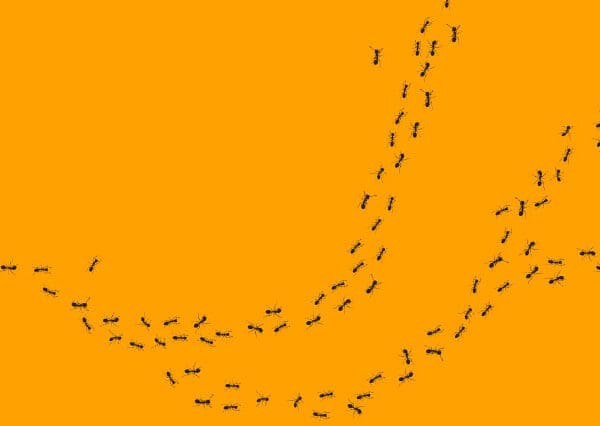
Residential Wasp
Control Services
Ensure that your property is, and
stays, wasp and yellow jacket free.
Wasp And Yellow Jacket
Pest Control
Rid your property of wasps and yellow jackets with our guaranteed 100% effective, professional wasp control services.
Wasps – they’re a terror, plain and simple. The greatest villains of the insect world, and they’ve earned the reputation. Has their ominous buzzing or unsettling presence on your property sent you running inside? Maybe you were simply minding your own business, mowing your lawn or tending your garden, when suddenly – OUCH! You’ve been stung a few times and now have to jump into your pool with your clothes on or go sprinting to the door for safety. What’s worse is when friends, family, kids, or pets get caught in an attack.
If you’re fed-up, it’s time to sting back! Bug Zapper can help. Regardless of the type of wasp, yellow jacket, or hornet, they’re no match for our talented professionals and expert pest control techniques. Our highly trained staff knows what it takes to completely eradicate any nest or infestation, above ground or hidden below. Don’t take chances removing a nest on your own – let Oregon’s #1 pest removal service take care of business with our 100% effective treatments and our renowned 100% satisfaction guarantee. Give Bug Zapper a call today, and get back to gardening unafraid!
Call
24/7
Customer Care and Pricing
Get Help From Our Experts
All Bugs Package
Ants, spiders, general pests, stingers, carpet beetles, interior and exterior fleas & ticks, and general pests.
- Service Starting At:
- $49
*Excludes: termites, mosquitoes & wood destroying insects.


Add Rodent Protection
Only $20/mo
 Bug Barrier Treatments
Bug Barrier Treatments Best Plan for Pets
Best Plan for Pets No Bugs. Period.
No Bugs. Period. Love it. Guarantee!
Love it. Guarantee! Unlimited Free Retreatments
Unlimited Free Retreatments
No Bugs. Period.
With our All Bugs Package, we guarantee you won’t have any creepy, crawly, biting, or stinging bugs on or in your home.
 No ants, no spiders, no fleas, no bedbugs, no cockroaches…NO bugs.
No ants, no spiders, no fleas, no bedbugs, no cockroaches…NO bugs.
How it works:
 We set up and maintain a Bug Barrier around your home.
We set up and maintain a Bug Barrier around your home. If a bug tries to cross that line, text us and we’ll take care of it faster than you can believe. It’s our No Bugs Guarantee.
If a bug tries to cross that line, text us and we’ll take care of it faster than you can believe. It’s our No Bugs Guarantee.
Basically, if you ever want to see bugs, you’ll have to go camping!
BUG ZAPPER’S PROMISE:
NO PESTS  Period
Period
With years of experience, continued education, and our expertise, we provide the best service and customer experience.

Wasp Control FAQs
What are wasps?
“Wasp” is the broad term for a wide variety of insect species related to – but separate from – ants and bees. There are many types of wasp in the Pacific Northwest – such as paper wasps, mud daubers, and yellow jackets – and they all sting. Some are more aggressive than others, but all can pose a real problem to humans, especially when wasps try to set up colonies in residential homes and yards. The most common wasps encountered in the Pacific Northwest are paper wasps and yellow jackets, which bear a number of similarities. Both are likely to sting if encroached upon or bothered in any way, and the stings can be numerous.
What’s the difference between a wasp, a yellow jacket, and a hornet?
Though they are all types of what are considered “wasps,” there are key differences between paper wasps, yellow jackets, and hornets.
Paper wasps have much more slender bodies than yellow jackets, hornets, or bees. Their antennae have orange tips, and their slender, long legs dangle freely when the wasp is in flight. Paper wasps construct paper nests, as their name suggests, from wood pulp or other plant fiber materials. The nests are grayish, bulbous, and made of a hexagonal cell structure like that of honeycomb. Paper wasps start a new colony every year, and only the queen lives through the winter. They most often nest under eaves, barbecue lids, and the edges of roofing. They can be unpredictable and can sting even when unprovoked.
Yellow jackets, funny enough, are known in most of the world simply as “the common wasp.” Their bodies are shorter and thicker than paper wasps, and their antennae are fully black. They have shorter legs than paper wasps, and fold these legs under their bodies during flight. Yellow jackets also build papery hives, but these nests can be hard to spot, as they are frequently located underground or within hollow structures (like dead trees or spaces between walls). These nests are much larger than paper wasp nests, and are capable of containing thousands of yellow jackets. Additionally, yellow jackets are much more aggressive than paper wasps.
The largest and most aggressive type of social wasp are called hornets – an insect greatly feared and reviled. Hornets often have the same black abdominal stripes as paper wasps and yellow jackets, however, hornets generally have a reddish-brown coloration (as opposed to yellow). More information on these specific devils can be found on our Hornets Page.
Due to their similar colors and stripes, bees are frequently mistaken for wasps, though most bees are not aggressive unless provoked. Bees are also incredibly beneficial to humans and the environment, and are treated with safe relocation techniques where able.
If you need help identifying a wasp, yellow jacket, hornet, bee, or other insect, don’t hesitate to give our technicians a call!
How do I know if I have a wasp infestation?
High wasp activity is the greatest indicator of a wasp infestation. Workers will be present on a property even if their nests remain hidden. These nests are often built in trees, under the eaves of roofs, in the ground, in crevices under outdoor structures, on walls, or within hollow sections of buildings. It is not advisable to try eliminating a nest on your own and without the aid of protective equipment, as the risk of being stung is high. Nests should not be approached or disturbed without assistance from a pest control professional.
How serious are wasps?
Common wasps and yellow jackets are often not quite as dangerous as hornets, due to their less potent venom and (somewhat) lower levels of aggression. However, wasps and yellow jackets still pack powerful stings that can be deadly to anyone with wasp venom allergies. Worker wasps generally won’t go out of their way to give you a sting, but they are highly territorial and protective of their nests, spurring attacks against anyone that comes close or disturbs their activities. Wasps will not die when stinging (unlike honey bees) and are capable of attacking until they deplete their large stores of venom. Additionally, social wasps utilize pheromones to mark threats and to incite whole colonies to attack individual people or animals. For these reasons, removal of wasp infestations can be very dangerous, and are best left to the trained professionals. That’s where Bug Zapper comes in. Our expert pest control technicians utilize a proven extermination system that eliminates wasps within mere minutes. Our wasp control technicians use commercial repellent products, specifically designed for professional use, that not only kill wasps but also prevent their return. We completely eradicate all colonies and their nests (below ground, above ground, and even on second story locations) to ensure reinfestation doesn’t occur, and every service we offer – regardless of wasp type or infestation size – is backed by our 100% satisfaction guarantee. Give us a call today, and watch your wasps disappear!
What types of training do your technicians go through?
We are committed to providing you with knowledgeable, experienced technicians with a high level of technical expertise. Each of our technicians is fully licensed and certified in Oregon, in addition to undergoing advanced training though our internal apprenticeship training program. All technicians complete state testing for laws and safety, including IIHS General, IIHS Structural, and Agricultural Vertebrate tests before going through a month-long apprenticeship field training program. Our staff regularly completes ongoing advanced training and attends industry-based seminars. We are fortunate to have an Associate Certified Entomologist (ACE) on our staff – one of 12 in the whole state of Oregon currently.
Do you have same day service?
Same day service is available. We pride ourselves on fast response times and timely service appointments. We make every effort to prioritize your needs and to offer same day appointments when available. A technician can be at your home in most cases within 24-48 hrs. Call our office and we will gladly work with your schedule and time.
Exceptional Value and Service
Looking for a better pest control experience? Our commitment to quality, satisfaction and service ensures you get the most value from your choice in pest services.

Highly Effective Solutions
Attention to detail, quality products, innovative solutions and in depth training to solve your pest problems.

Exceptional Customer Service
Friendly, accommodating and caring attention is given to every customer.

Lightning Fast Service
Prompt, Responsive and punctual service, your pest problem is our priority with same day service.

Free Re-Service
Attention to detail, quality products, innovative solutions and in depth training to solve your pest problems.

Upfront Pricing and Plans
Transparent, upfront pricing and plans. Three levels of service offered. No hidden costs, ever!
Related Articles
Get answers to your pest question now! Call or Text Us.

Convenient Locations
Looking for a trusted pest control company in your area? We serve cities throughout Oregon. Find complete and reliable pest control near you!

Plans & Pricing
We have a pest service plan for you! Our convenient plans give homeowners a range of affordable pest control pricing options.
AREAS WE SERVE


 Bug Barrier Treatments
Bug Barrier Treatments No ants, no spiders, no fleas, no bedbugs, no cockroaches…NO bugs.
No ants, no spiders, no fleas, no bedbugs, no cockroaches…NO bugs.
 Period
Period

